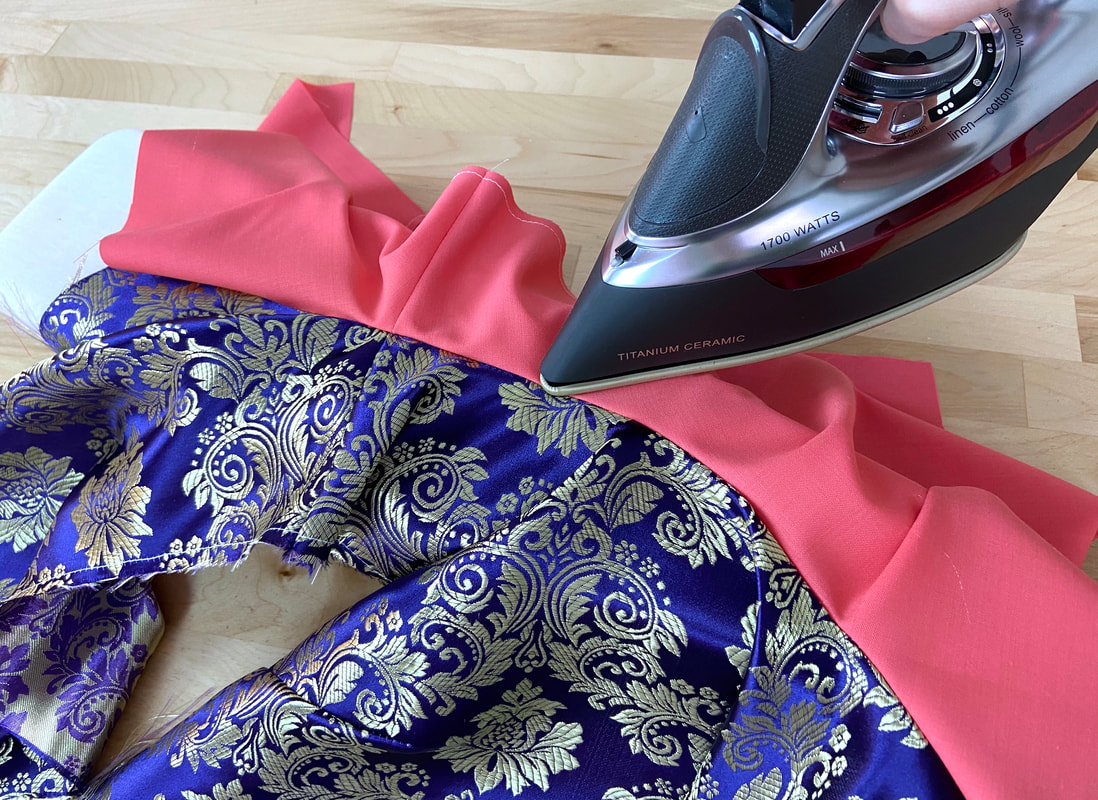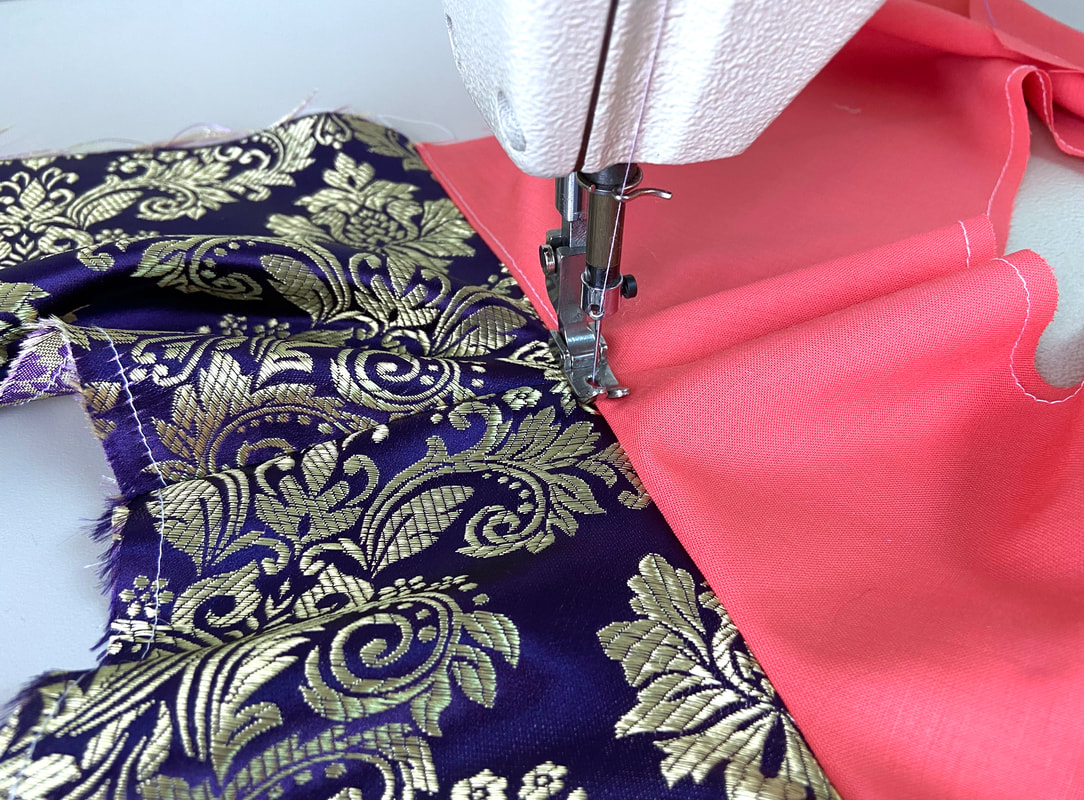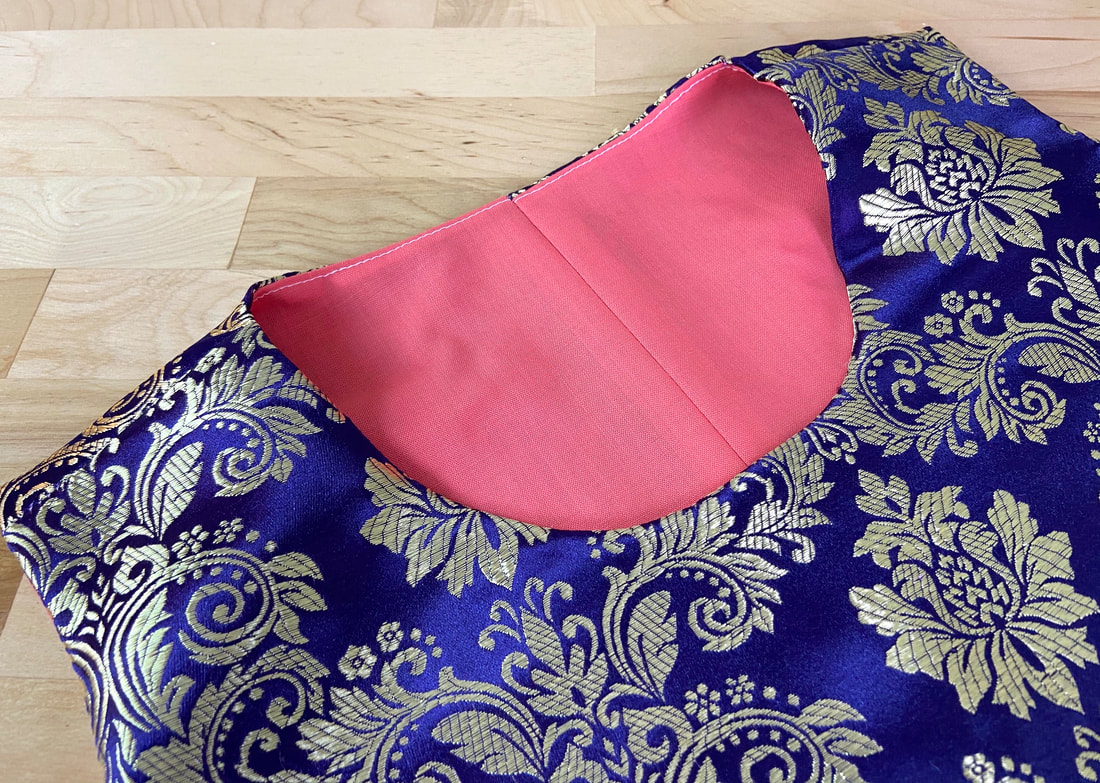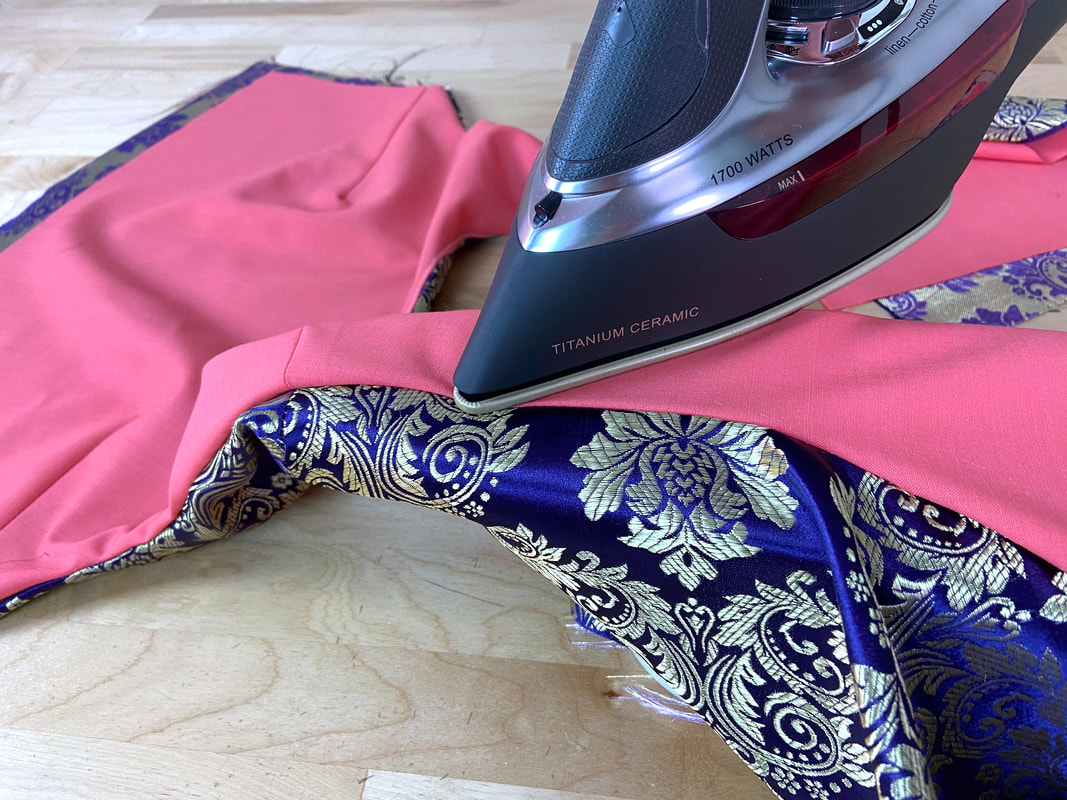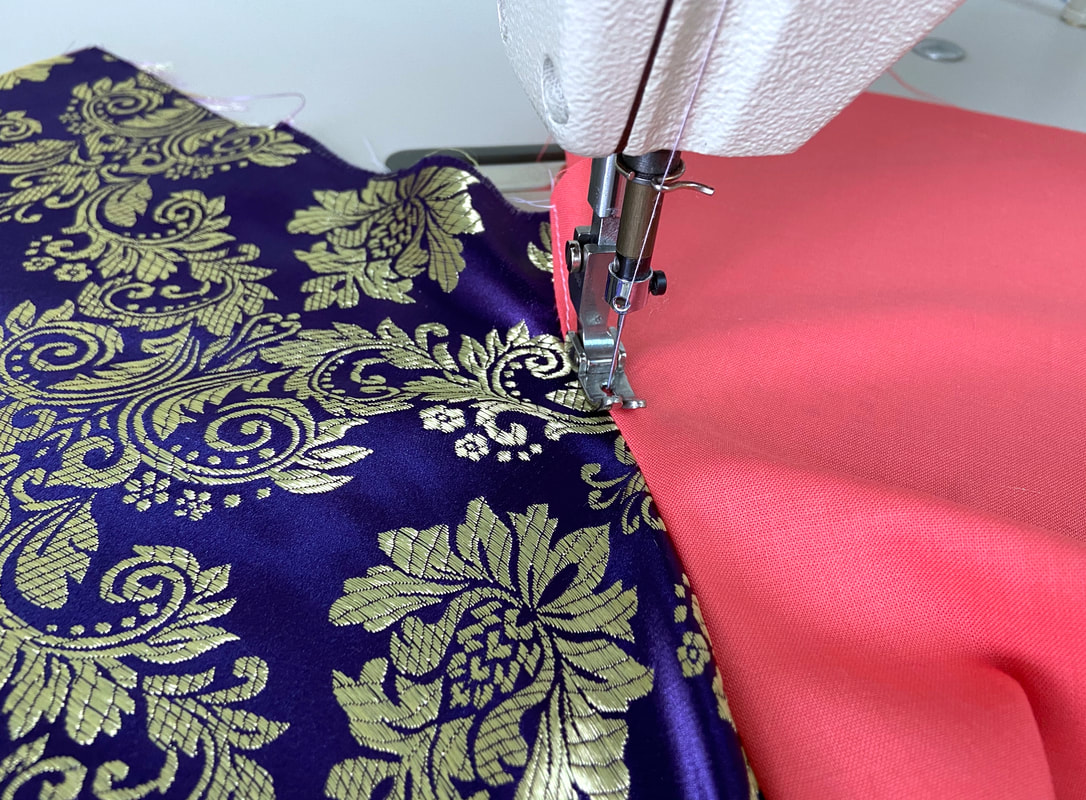Sewing Rule: Understitch Lining Along All Finished Edges
In order for lined garment edges (such as the neckline and armhole) to lay smooth and flat, something called understitching is used to stabilize the lining layer and prevent it from rolling to the outside of the garment in the finished application. Understitching is applied after the lining is stitched to its corresponding garment edge.
Once the lining and garment edges are stitched, trimmed and notched as needed, the seam is ironed with the seam allowance and lining layers pointing away from the garment layer. The seam allowance edges should be positioned directly underneath the lining layer.
Ironing the seam in this manner, prior to understitching, will keep all layers stable and properly aligned during machine stitching to follow.
Ironing the seam in this manner, prior to understitching, will keep all layers stable and properly aligned during machine stitching to follow.
The lining is then topstitched at about 1/8" away from the seamline, catching all seam allowance layers underneath. If you are working with bulky, thick fabrics featuring wider seam allowance edges, you should understitch farther away from the seams - about 1/4".
It may take some practice to apply a perfectly even understitch, especially when stitching along curved edges. As always, practice makes perfect so don't get discouraged if your first try is not as smooth as you expected!
It may take some practice to apply a perfectly even understitch, especially when stitching along curved edges. As always, practice makes perfect so don't get discouraged if your first try is not as smooth as you expected!
Understitching is only visible on the wrong side of the garment, and its role is purely functional and technical.
If left unstitched, lining tends to lose its structure and show along the garment's finished edges. Understitching ensures that these edges remain flat, encouraging a smoother line. It also keeps the lining layer directed toward the garment's wrong side thus preventing it from rolling to the outside of the garment.
If left unstitched, lining tends to lose its structure and show along the garment's finished edges. Understitching ensures that these edges remain flat, encouraging a smoother line. It also keeps the lining layer directed toward the garment's wrong side thus preventing it from rolling to the outside of the garment.
At times, you may find yourself having to understitch in difficult-to-reach areas. This is often the case when understitching armhole edges after the lined neckline has already been stitched. In this case, it helps to iron the lined seams on a sleeve board or seam roll to flatten these more unreachable seam areas.
You will most likely have to understitch in portions, starting at the widest opening (usually side seam) and ending as far as you can into the narrowest, most difficult-to-reach area (shoulder seams). The full armhole edge in this case, will be completed with two separate understitch application, starting at each area of the garment's open sides seams and ending at the narrow shoulder seams.
You will most likely have to understitch in portions, starting at the widest opening (usually side seam) and ending as far as you can into the narrowest, most difficult-to-reach area (shoulder seams). The full armhole edge in this case, will be completed with two separate understitch application, starting at each area of the garment's open sides seams and ending at the narrow shoulder seams.

